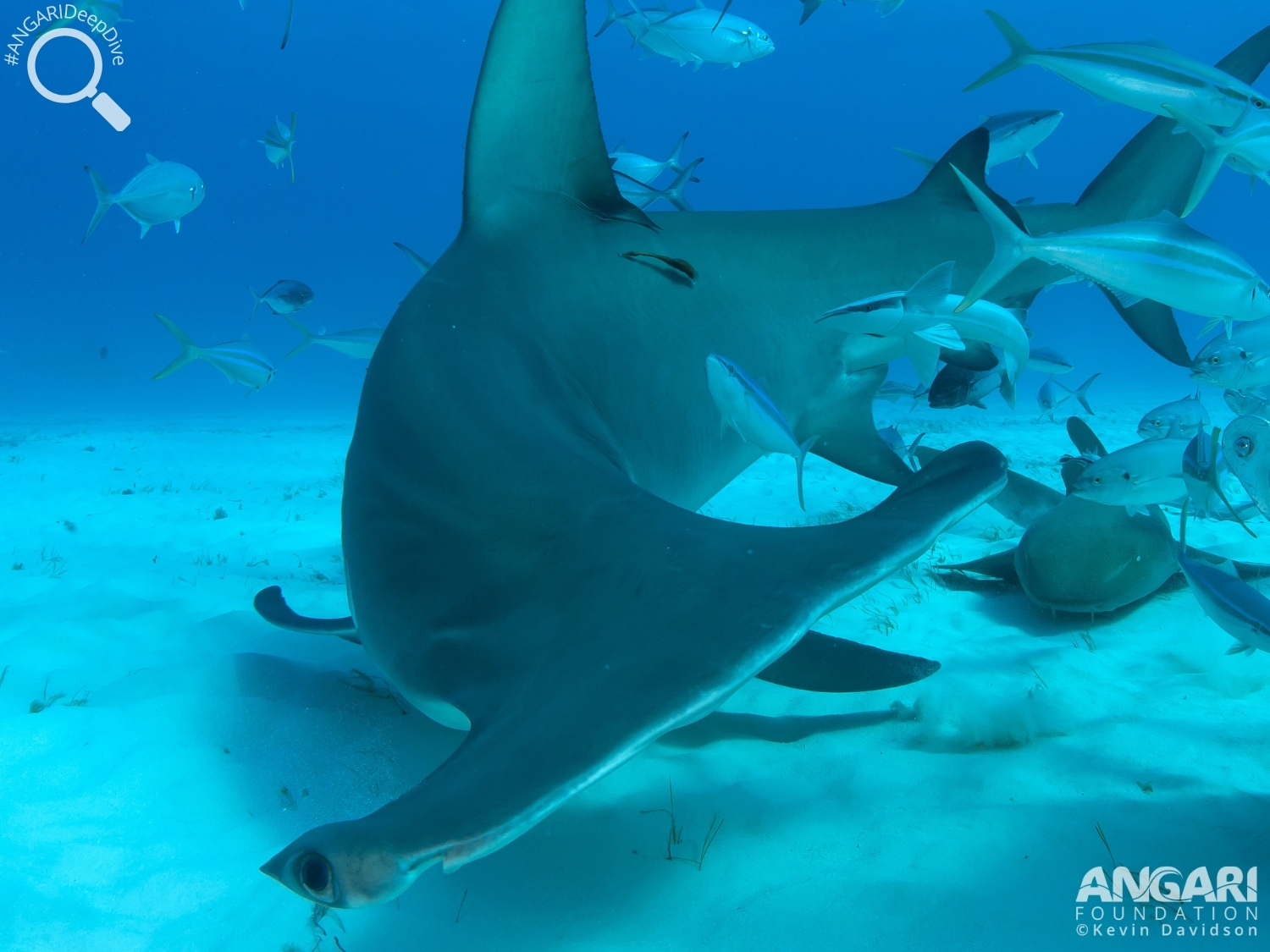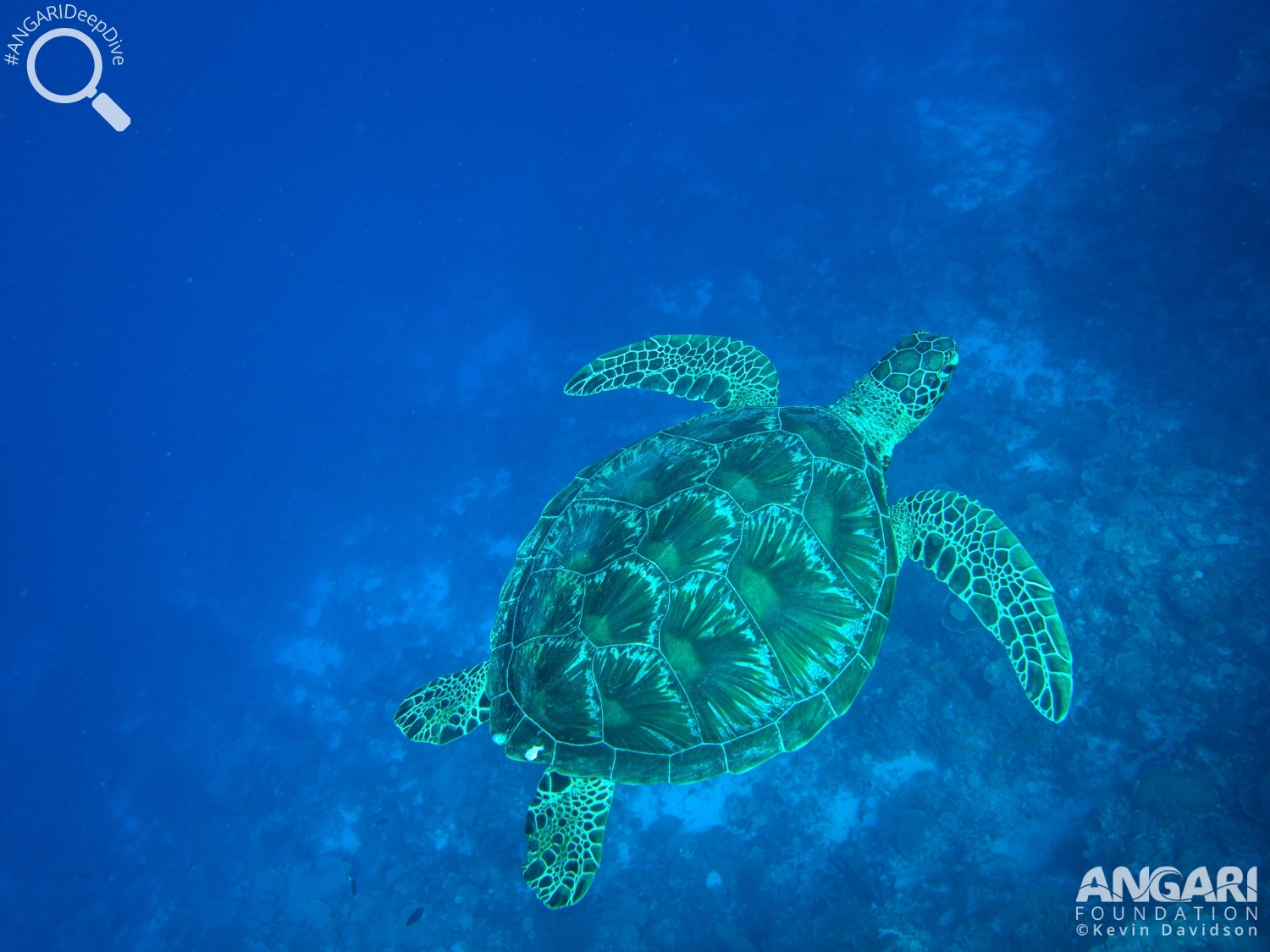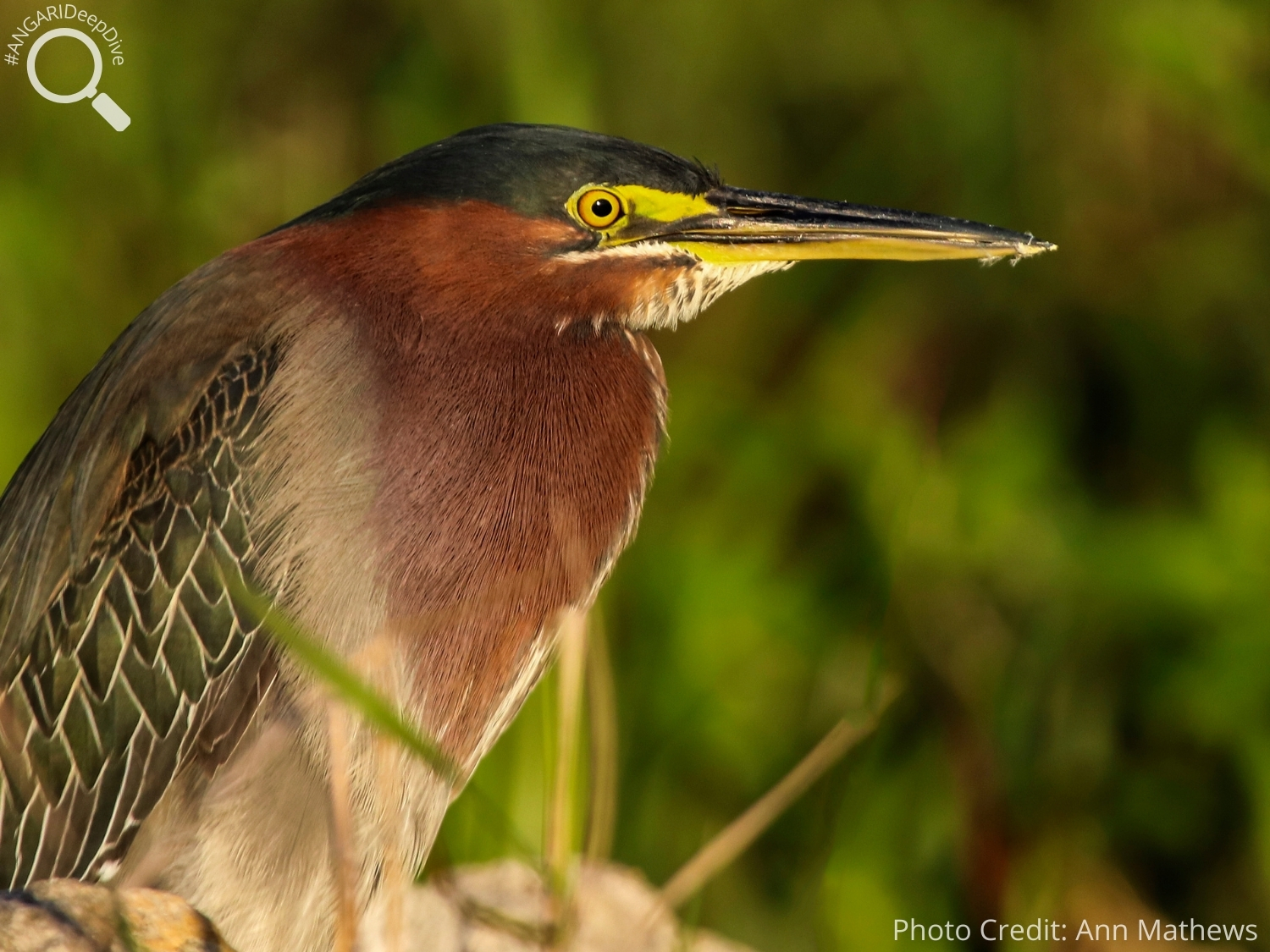The great hammerhead shark (Sphyrna mokarran) is an apex predator within the shark community and…

Lemon Shark (Negaprion brevirostris)
Lemon sharks (Negaprion Brevirostris) are a species of shark that are commonly found in the subtropical and tropical regions of the Atlantic and Pacific Oceans. You will find them swimming in the shallow waters around coral reefs, mangrove forests and in enclosed bays. They have a distinct yellow hue to their skin, which they use to help with camouflage when they are hunting in sandy waters.
#1: Lemon sharks are a social shark species.
A group of sharks is called a “shiver,” and lemon shark shivers may include up to 20 individuals. These sharks are a very social species and grouping together has benefits, like increased communication, protection and availability of other sharks when mating season take place.
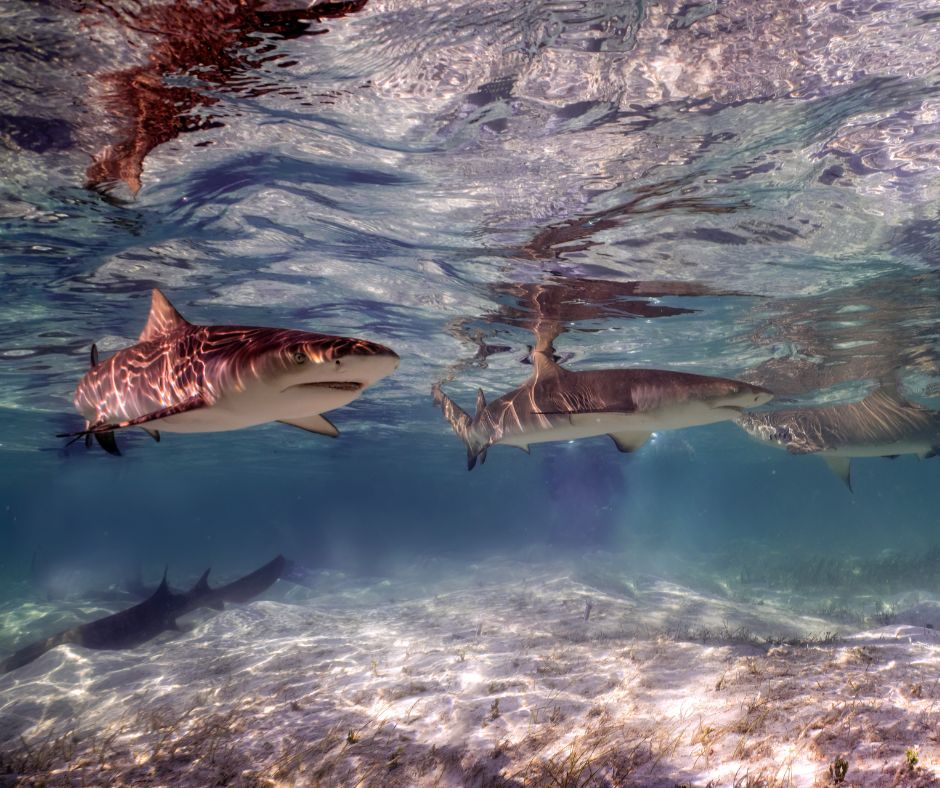
#2: How do we identify lemon sharks?
Lemon sharks are easily identified by the presence of a pair of similarly sized dorsal fins atop their body. You can also identify a lemon shark by its blunt/rounded snout combined with their short and wide mouth. Unsurprisingly, lemon sharks get their name from their yellowish tinted coloring, which is generally darker on their dorsal side and lighter on their belly.
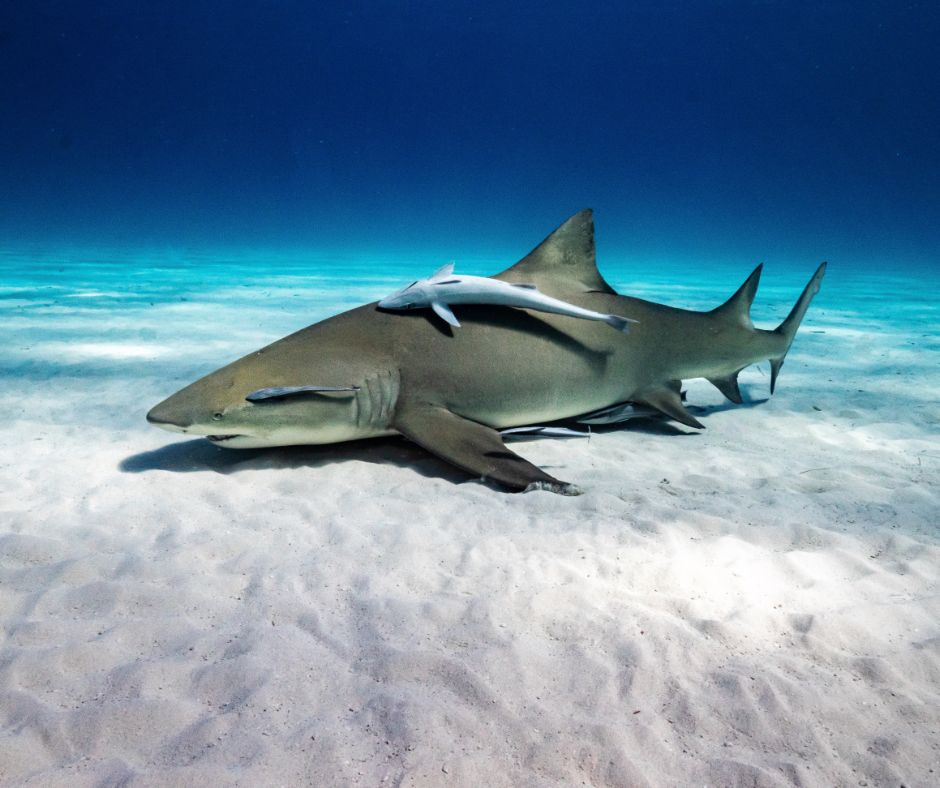
#3: How large do lemon sharks get?
Lemon sharks can grow quite large, growing up to 10 feet in length and weigh up to 200 pounds which makes it one of the larger sharks in the ocean.
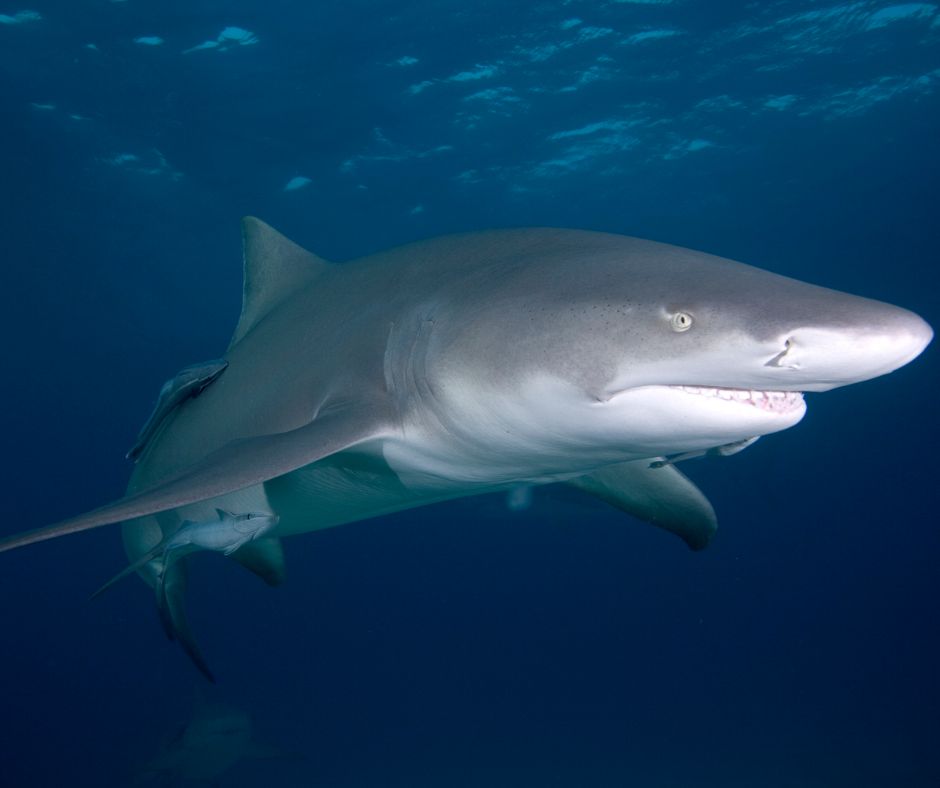
#4: What is on the menu for a lemon shark?
The lemon shark’s diet reflects the habitat in which they live. Their diet consists mostly of bony fish, crustaceans and rays, as these are easy to catch, but they have been known to eat other smaller sharks and even sea birds floating on the surface.

#5: Lemon sharks can hunt!
Lemon sharks use their short snouts and flattened heads to help catch their prey. This adaptation always them to grab their prey whole and get a good grip, this combined with their camouflaged colourings enables them to be an efficient predator.
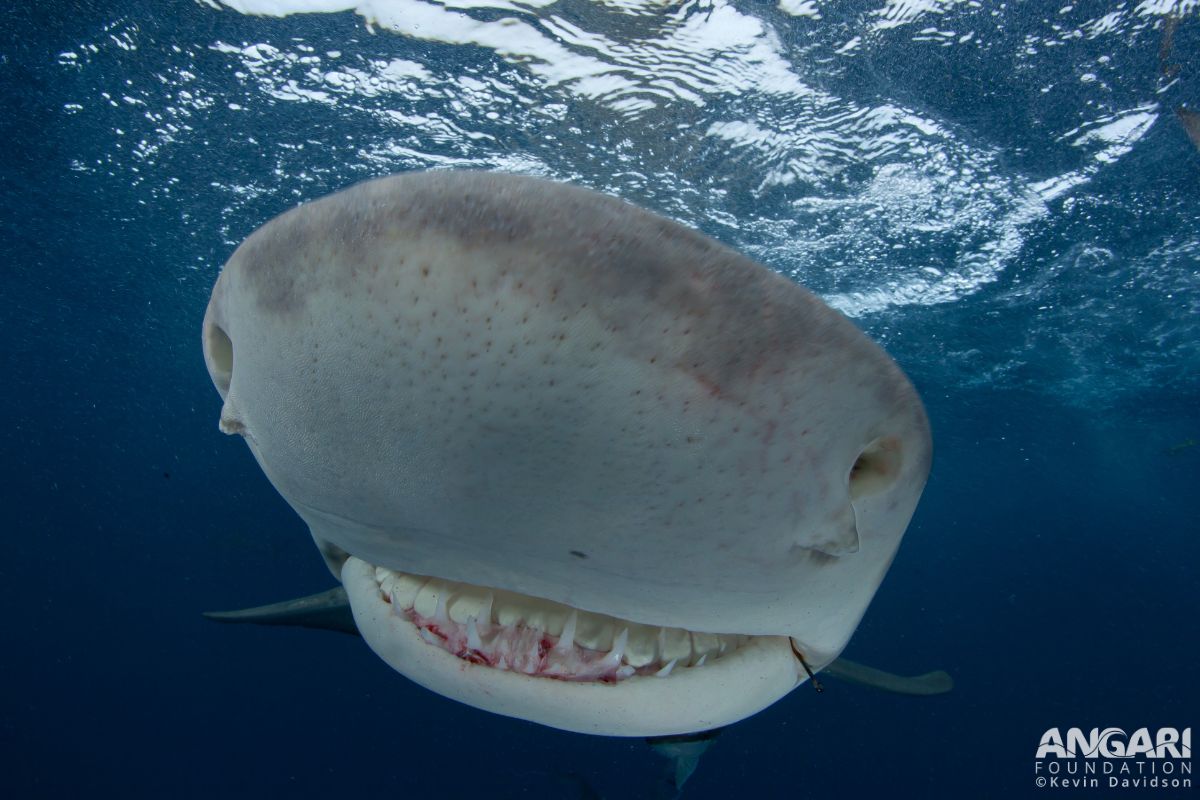
#6: There is no rest for a lemon shark.
Lemon sharks are often seen “resting” on the seabed, patiently waiting for fish to clean parasites off of them. This might seem like a low energy task but it isn’t. Lemon sharks need to constantly have oxygen-rich water pumping over their gills to breathe, and they normally accomplish this by swimming. So, when a lemon shark rests on the seabed, it is actually using more energy than normal to keep the water pumping over its gills!

#7: How do lemon sharks reproduce?
Lemon sharks don’t reach sexual maturity until 11+ years and are usually averaging 8 feet in length by this time. Mating for lemon sharks occurs during the spring and summer months. Once a female becomes pregnant, she will have a gestation period of 10-12 months before she gives birth to live young. Giving birth to live young means these sharks are viviparous because the embryo develops inside the mother instead of the mother laying eggs.
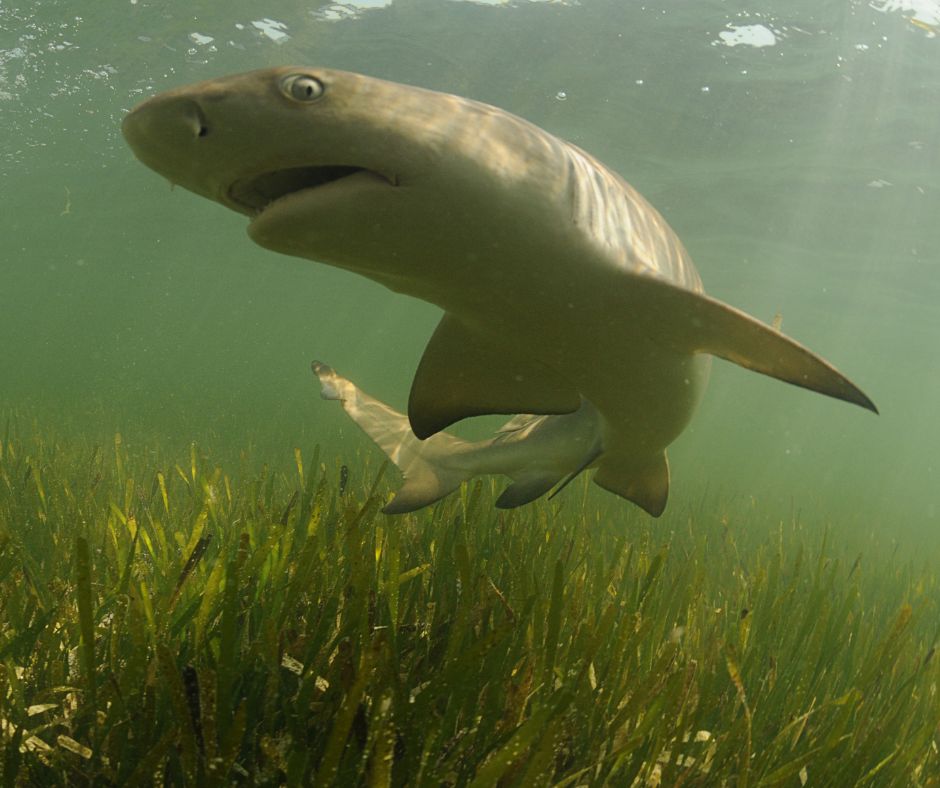
#8: Lemon sharks get old.
It isn’t known exactly how long lemon sharks can live, but it is estimated that their average lifespan ranges from 25 to 30 years.

The lemon shark is listed on the IUCN Red List as a vulnerable species. Scientists believe lemon shark populations, specifically in Florida waters, have depleted over recent years due to their proximity to populated shorelines and humans.
Lemon sharks are often victims of targeted fishing for their fins, meat and skin but also suffer as by-catch from commercial and recreational fisheries. There are no current management plans for lemon sharks specifically; however, we can help preserve their populations by adopting responsible fishing practices.
Additional Lemon Shark Resources:
1. Florida Museum – Negaprion brevirostris
2. Florida Fish and Wildlife Conservation Commission – Lemon Shark
3. Lemon shark family tree – Bimini Shark Lab

